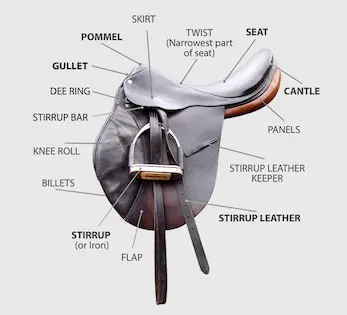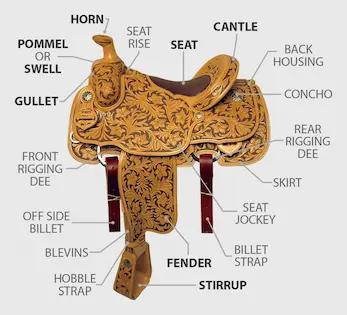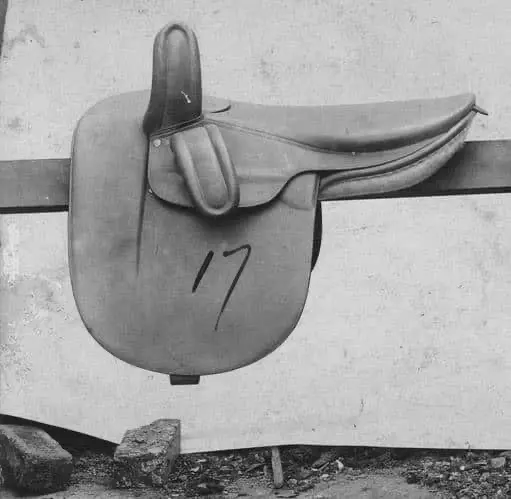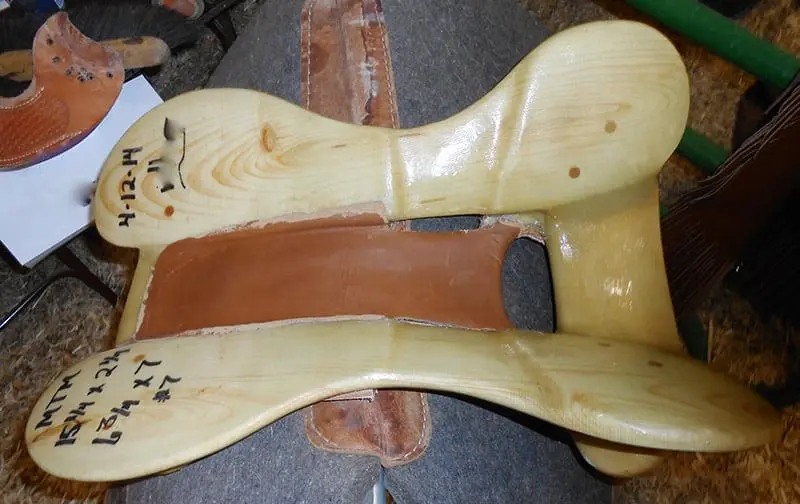A properly fitting saddle is crucially important to your horse and his well being but how do you know which saddle is right? These days with much of our world being online even something as important as buying a saddle can be done without ever visiting a ‘bricks and mortar’ saddlery so it’s important to do your homework before buying. In an ideal world, you shouldn’t buy a saddle without trying it on your horse first but this isn’t always possible so it’s vital to know what to look out for and what mistakes to avoid along the way.
Why is it so important to have a correctly fitting saddle?
You wouldn’t consider wearing a pair of shoes that were so small they hurt your feet or a pair that were too big they just fell off so why would you allow your horse to have a saddle that didn’t fit properly? Except a poorly fitted saddle is far more serious than an ill-fitting pair of shoes, the wrong saddle will not only be uncomfortable it will, over time, become painful and could make your horse bad-tempered. After all, if your horse is in pain he can’t tell you so will try to avoid the source of the pain. People don’t realize that a poorly fitting saddle can also make for a very uncomfortable and even painful ride too, especially if you suffer from back pain yourself.
Parts of the saddle
It’s important to know the different parts of a saddle and while both English and Western saddles do have many similar parts there are a few differences. For example, an English saddle won’t have fenders whereas a Western saddle doesn’t have knee rolls.
What type of saddle do I need?
The type of saddle you go for is really dependant on what you want to do and while there’s pretty much a saddle for every type of riding there’s also a general purpose (or GP) saddle that is, unsurprisingly, the most popular and can be used for most under saddle activities.
All saddles will fit into one of two categories depending on discipline, English (sometimes referred to as classical) or Western. English disciplines including things like jumping, dressage and hunting whereas Western riding, which started with ranchers in the US, includes things like reining (sometimes called high-speed dressage), cutting (where the horse and rider will ‘cut’ a steer out from the rest of the herd) and barrel racing.
English saddles
English discipline saddles vary depending on their purpose but they all have padded seats that are designed to give the rider a better position for their chosen activity.
- General Purpose (GP) – As you would expect general purpose saddles are good all-round saddles for English riding. Favored by riding schools because they’re able to accommodate riders of different sizes and of varying abilities. The cut of the saddle makes them idea for basic jumping, dressage and even for somebody trying their hand at Western riding.
- Dressage – Perfect for riders specializing in dressage, they have a much deeper seat than the general purpose saddle which helps the rider to sit straight-legged and upright. As a rule dressage saddles are made from lightweight materials that are thin and provide the rider with a closer connection to the horse.
- Jumping – If you’re planning on doing a lot of jumping then you may want to consider a jumping saddle. Similar in appearance to the GP saddle, it offers more leg support and also helps to stabilize and protect the lower leg while jumping.
- Hunting – Designed for all forms of hunting as well as for long extended gallops this saddle has a lower pommel and cantle than other saddles. This is so that it can help the rider to keep their weight back and their feet forward.
- Side-Saddle – Once the preserve of aristocratic ladies side-saddle is still very popular today so needs a special saddle to help keep the rider positioned correctly while also allowing them to relax their right leg. Side-saddles have two supports for the rider’s legs which help to keep them positioned correctly and comfortably, even when jumping or galloping.
- Endurance – A lightweight saddle that has been designed especially for long-distance riding. They tend to have more padding around the seat and skirts too.
- Show – A clean-cut straight saddle, show saddles are similar in appearance to dressage one. The idea is that they can show off the horse’s shoulder well.
- Polo – Polo saddles have a flat seat with straight flaps to allow for a longer leg position. They offer no leg padding so that the rider’s movement isn’t inhibited at all.
- Racing – Racing saddles are extremely lightweight and are little more than a seat. Riders aren’t meant to sit on racing saddles but instead are more of a cover to protect the rider’s legs from the girth and hold the stirrups. The only difference between flat and steeplechase saddles is the flap, like a jumping saddle, they’re larger in steeplechase saddles to give the rider a more secure lower leg.
- Kids – A smaller version of the GP saddle that has a smaller seat and a more pronounced pommel and cantle area to help a child sit properly on the saddle. Some kids saddles even have a handle that a child can use to help keep themselves balanced.
Western saddles
Very different from English discipline saddles, Western saddles are designed to enable the rider to sit low in the saddle with their legs in a more relaxed position. They have a horn on the pommel which the rider can use to help keep balance during fast turns.
- Pleasure – Sometimes called a trail saddle, these are the Western equivalent of the English general purpose saddle.
- Ranch – As you’d expect ranch saddles are working saddles designed for long hours working cattle. They’re built for comfort and have a deep seat, high cantle and double cinch.
- Roping – Giving a comfortable seat but still allowing for plenty of movement, roping saddles are designed for roping events rather than as a working saddle. Part of a roping event is to tie a cow to the horn so these saddles have an extremely tough tree and secure horn. The seat is often made out of suede to prevent the rider sliding about.
- Cutting – A versatile saddle, cutting saddles can be used for penning, reining and training as well as cutting. They have a lower cantle than roping saddles and a longer seat.
- Reining – A competition saddle, they’re designed to allow the rider to sit further back and deeper in the saddle which helps them to keep their balance during high-speed starts, stops and turns. They give the rider a closer contact with the horse which means they’re also popular as training saddles.
- Barrel racing – Small and lightweight, barrel racing saddles allow the rider to be firmly seated while still being able to maneuver without problems. They generally have a deep seat as well high swells for the rider to ‘hook’ their knees under.
- Endurance – With endurance competitions covering anything up to 100 miles a day a comfortable lightweight saddle is important. Endurance saddles have padded seats that are built for comfort and have the ability to secure saddlebags to them. Endurance saddles are also popular with trail ridings because of their comfort.
- Show – Meant for the show ring these saddles are highly embellished with stitching, embroidery and detailed tooling. The seats are usually padded or covered in suede while the stirrups are turned which means that they are face outwards at right angles to the horse.
- Youth – With a smaller seat these are similar to pleasure saddles in appearance. Aimed more at older children they can be used on full-sized horses.
- Australian Stock – The Australian stock saddle is a cross between an English GP and Western saddle, it has a narrower seat than the Western saddle but wider stirrup leathers compared to the GP saddle. It’s not only popular in Australian but also with many riders around the world who spend long hours in the saddle every day.
Treeless versus Treed (or traditional)?
For centuries, if not millennia, saddles have traditionally been made with a tree in the center with all of the leather (or synthetic material) and padding bound to them. The idea of the tree, which is still generally made of wood (but can also be made from fiberglass), is to enable the saddle to conform to the horse’s back as well as the rider’s seat.
In the past few decades, there has been a growth in the number of people using a treeless saddle. The advantage of a treeless saddle is that, as well as being much lighter for both horse and rider, you can feel every movement the horse takes under the saddle.
These days you don’t have to be limited to either a treed or treeless saddle, if you worry about a treeless saddle hurting your horse but don’t like the fixed form of a treed saddle then you might want to consider a saddle with either an adjustable tree or one that has air pockets instead of a tree.
|
| Treed | Treeless | Adjustable Tree | Air Pockets |
| Pros |
|
|
|
|
| Cons |
|
|
|
|
Page 2 – Measuring for a saddle




